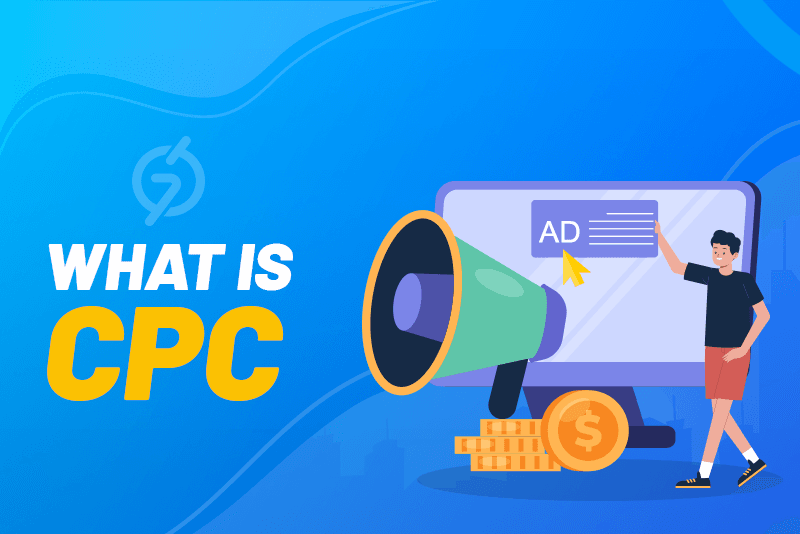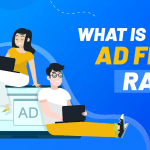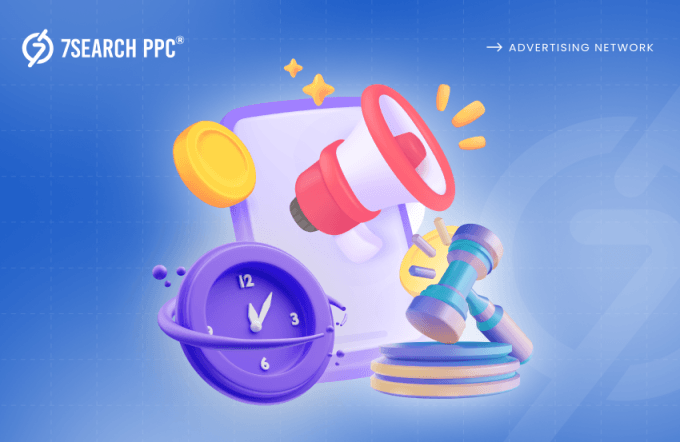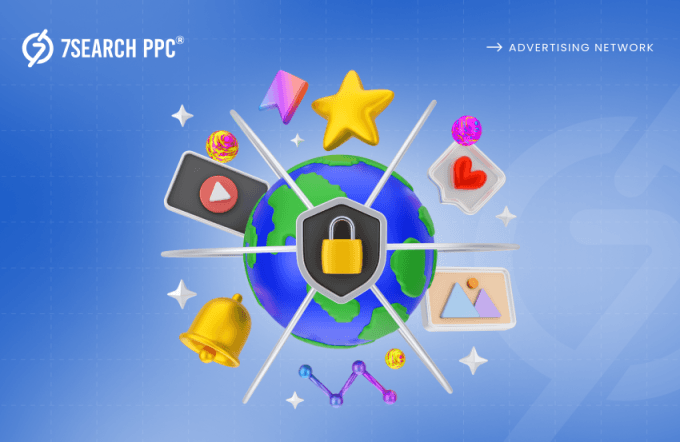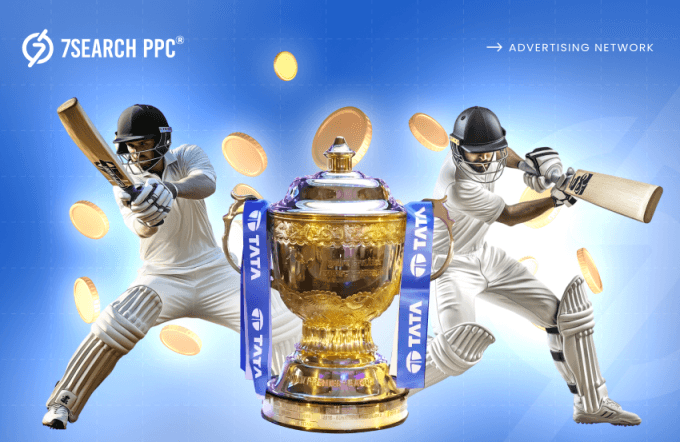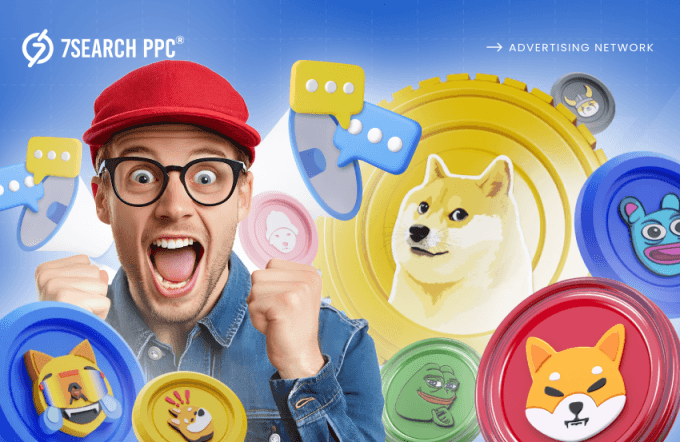When advertisers enter the world of digital advertising, many things run through their minds: CTR, Leads, ROI—the list goes on and on. Ultimately, advertisers need to increase their sales without compromising their ad budget. Today, let’s concentrate on one of the most crucial metrics for campaign success: CPC, which stands for Cost-Per-Click.
This metric is used to filter the audience and pay for those who really have some interest in your offerings. Understanding Cost-per-Click is like finding a treasure chest full of insights for your ad campaigns. It helps you make the best use of your budget, target the right audience, and ultimately turn clicks into conversions and sales.
So, get ready to explore the world of CPC and discover why it’s your game-changing move in the online advertising arena.
What is CPC (Cost-Per-Click) in Digital Advertising?
Digital advertising is surrounded by various pricing models. Each pricing model has its role, which is essential for every advertiser to know. Among them, there is one pricing model that supports advertisers in attaining their advertising goals without burning through their budget without guaranteed results, known as CPC.
Cost-per-click in digital advertising is a pricing model where marketers or advertisers pay a fee every time a user taps on their online ad. It is used within the pay-per-click (PPC) framework, which is the most utilized pricing model on our advertising platform, 7Search PPC.
Advertisers specify the maximum amount (in the form of a bid) they are willing to pay for a click, which determines the placement of their ad in auctions against competitors. The actual Cost-per-Click is often lower than the bid and is influenced by factors such as:
- Ad Quality
- Keyword Relevance
- Competition
CPC campaigns target specific keywords (for search ads) or placements (for display ads), ensuring that the digital ads are contextually relevant to users. Successful Cost-per-Click strategies focus on the following:
- Selecting optimal keywords
- Creating engaging ads
- Optimizing landing pages to maximize conversions from ad clicks.
Find Your Cost-Per-Click
Above, we understand that the CPC model is a metric utilized in online advertising to measure the amount you pay each time someone clicks on your ad. Now, it’s time to learn how to calculate CPC. Calculating cost-per-click is a two-step process:
First Step: Collect Data
You will need two essential pieces of information for your CPC ad campaign: the total cost of your ad campaign and the total number of clicks your ad received. You can find this data in the advertising platform you are using.
Second Step: Use Formula
Here’s the formula:
Cost-Per-Click = Total cost of campaign / Total number of clicks
For example, let’s say you spent $50 on a PPC ad campaign and received clicks. Your CPC would be:
- Cost-per-Click = $50 / 100
- Cost-Per-Click = $ 0.50 per click.
Calculation is boring? If you don’t want or like to calculate this amount manually, you can utilize free CPC calculators available in the market, such as:
- WebFx
- Publift
- upGrowth
The Importance of CPC for Your Business
Cost-per-click tells you exactly how much you’re spending each time someone clicks on your ad. Understanding the importance of this pricing model is key to running successful ad campaigns and getting the most out of your budget. Here is why Cost-per-Click is important for your business:
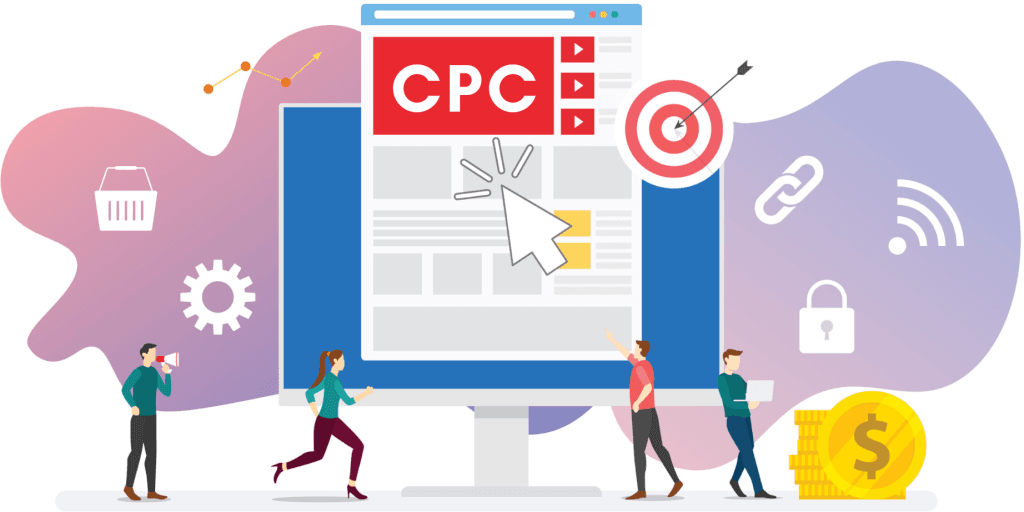
Targeted Traffic and Efficiency
Cost-per-click operates differently than Cost-Per-Mille (CPM). With CPC, you only pay when the audience taps on your ad, which shows genuine interest from the viewer’s side. This method focuses on attracting clicks from potential customers rather than just views, allowing you to target a specific audience effectively. This ensures that your advertising budget is used efficiently, making the most impact on users who are actively seeking what you offer.
Measurable Performance and Optimization
The cost-per-click is not just a cost; it’s a performance indicator. By tracking the cost-per-click, you can measure how much you’re investing to acquire each interested user. This data, combined with conversion rates (clicks that turn into sales or leads), helps you identify keywords or ad variations that resonate best with your target audience. With this data graph, you can refine your campaigns for optimal performance and maximize the return you invested in your CPC ads.
Budget Control and Flexibility
Overspending is a major issue that affects many advertisers. They struggle to control budgets and often find themselves in financial shortages. Such shortages can lead to the failure of ad campaigns that deserve to be successful and impactful.
Cost-per-click enables you to set specific spending limits.
You can determine the maximum amount you will pay for each click and set daily budget caps. This stops you from overspending and allows you to make adjustments as your campaign progresses.
If certain keywords are leading to high costs per click and low conversion rates, you can easily modify your strategy by lowering bids or shifting focus to more effective areas. This ensures that your ad campaign has the most significant impact while remaining within budget.
Increased ROI Potential
Clicks are like doorbells, which hint to marketers that someone’s at the door, but it’s up to you to make the sale. You can take these leads as the most potential ones compared to views. By prioritizing clicks from users actively interested in your product or service, CPC advertising increases the likelihood of conversions. Clicks translate to potential customers, and with the right landing page and offer, those clicks can convert into sales and signups.
This advertising model has the potential to significantly improve your return on investment (ROI), ensuring you get more value for your advertising investment.
Competitive Advantage
Understanding and optimizing Cost-per-Click is crucial for gaining an edge in online advertising. You can significantly benefit by acquiring clicks more efficiently at a lower cost-per-click than your competitors. This enables you to:
- Extend your advertising budget
- Reach your target audience more effectively
- Achieve your marketing goals more successfully.
What Factors Influence Your Cost-per-Click?
Cost-per-click in online advertising is influenced by various factors. Understanding these factors can assist advertisers in optimizing their campaigns and achieving better results. Here are some key elements that influence CPC:
Industry and Competition
In online advertising, industries with high competition, such as insurance or legal services, will have higher costs per click because advertisers are competing for the same clicks. Additionally, industries with a higher risk, such as gambling, may face increased costs due to potential fraudulent activity.
The amount of competition in your industry or for specific keywords affects the cost per click of your ads. When many competitors bid on the same keywords, prices go up. To keep your ads affordable and effective, it’s helpful to analyze your competitors and find less competitive, niche keywords. This way, you can lower your Cost-per-Click and still reach your target audience.
Quality and Relevance
Search engines always look to display the most relevant ads to users. Just as a well-written product description leads to more sales, a clearly targeted ad with relevant keywords can increase your click-through rate (CTR). This involves creating ads that directly address a user’s search intent and developing landing pages that deliver on the promise of your ad.
By showcasing high-quality and relevant content, you can achieve a lower CPC from the CPC ad network.
Bidding Strategy and Budget
You can control how much you are willing to pay for a click by setting a maximum bid. A higher maximum bid increases your chances of appearing at the top of search results but also means you’ll pay more per click. It’s like setting a budget at an auction. You can win the most prized item, but it will cost you more. Optimizing your bids based on keyword competition and setting a clear budget can help you strike a balance between getting seen and staying within your budget.
Ad Rank and Extensions
Ad rank is like your placement in the search results. It’s based on factors such as your bid, ad quality, and ad extensions. The extension adds extra features to your ad, like links to particular pages on your website or phone numbers for easy calls. Substantial extensions can make your ad more relevant and informative, which could result in more clicks and a lower cost per click.
Location & Device Targeting
The CPC can vary based on the location of your target audience. Generally, clicks from densely populated areas or users on mobile devices might be more expensive. This is similar to how prices can differ based on location in the real world. By strategically targeting the location and device usage of your ideal audience, you can optimize your Cost-per-Click. You might have to pay a bit more to reach users in a prime location, but if it leads to more sales, it can be worth it.
Types of CPC Bidding
There are two main types of Cost-Per-Click bidding:
Manual Bidding
When using manual bidding, you can set the maximum Cost-per-Click for each keyword individually. This approach gives you full control over how your budget is allocated, allowing you to adjust bids based on performance and specific objectives.
However, it can be laborious and difficult to manage, especially for large campaigns, as it requires constant monitoring and adjustments.
Automated Bidding
Automated bidding uses AI to handle your bids according to your campaign goals, like maximizing clicks or conversions. This bidding approach eliminates the need for manual intervention, saving time and enabling better audience segmentation and scaling.
Automated bidding works best when you have a significant amount of historical data, as this allows algorithms to make smarter decisions and optimize your bids more effectively.
(The rate set in automated bidding depends on the ad networks, as they utilize different algorithms and criteria to determine the optimal bid amount.)
Conclusion
Understanding and optimizing cost-per-click (CPC) is crucial for mastering the PPC ad model and achieving your advertising goals efficiently. Cost-per-click helps advertisers target specific audiences, control budgets, and improve return on investment (ROI). By focusing on key factors such as ad quality, bidding strategies, and audience targeting, you can take advantage of the CPC model to drive impactful ad campaigns.
As you navigate the various advertising models available, incorporating Cost-per-Click into your strategy will ensure you make the most out of every click and enhance your overall marketing success.
Frequently Asked Questions (FAQs)
What is CPC?
Ans. CPC stands for Cost-per-Click. This pricing model asks advertisers to pay only for the clicks their ad receives during the campaign.
Why is CPC important?
Ans. Cost-per-click helps you target people interested in what you offer and lets you track how well your ads are doing. This way, you can get the most out of your advertising budget.
How do I calculate Cost-per-Click?
Ans. Add up the total cost of your ad campaign and divide it by the total number of clicks your ad received.
Is Cost-per-Click the only pricing model in digital advertising?
Ans. No, there are others, like CPM (Cost-Per-Mille). With CPC, you only pay for clicks, while with CPM, you pay per thousand impressions.
Is location targeting important for CPC?
Ans. Yes! Targeting your ads to the locations where your ideal audience is can help you optimize your Cost-per-Click.


